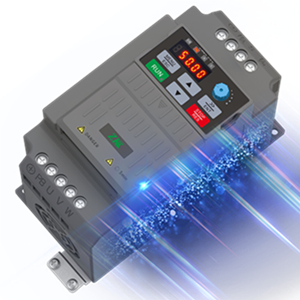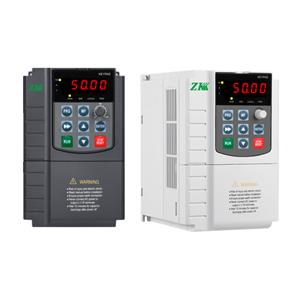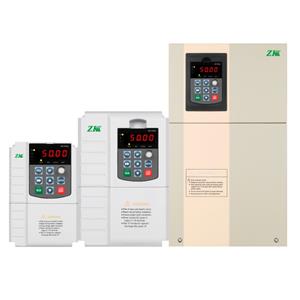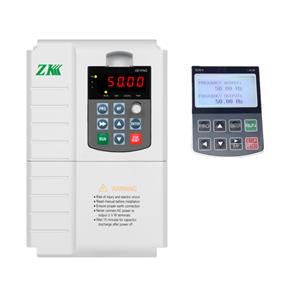Key Technical Challenges in Solar Inverter Design and Operation
Efficiency and Energy Loss:
Maximizing conversion efficiency remains a paramount objective for solar water pump inverter development. While modern solar water pump inverters boast efficiencies as high as 98%, the residual energy losses during the DC-to-AC conversion process still impact overall system performance and increase operating costs. Reducing inefficiencies not only enhances energy yield but also contributes to the economic viability of solar energy installations.
Thermal Management:
High levels of heat are generated during solar water pump inverter operation, particularly in medium-power and high-power applications. Insufficient cooling can lead to overheating, component degradation, reduced operational reliability, and shortened lifespan. Robust thermal management systems are necessary to support long-term performance in a wide range of climatic conditions, including extreme heat environments.
Grid Compatibility and Integration:
With the escalating adoption of solar energy, solar water pump inverters must synchronize with increasingly complex and dynamic electrical grid systems. Challenges include ensuring grid stability, managing fluctuations due to intermittent solar power generation, and accommodating reactive power control requirements to stabilize voltage and frequency parameters.
Durability and Reliability:
Solar water pump inverters are typically installed outdoors, where they face environmental stresses such as dust accumulation, humidity exposure, temperature fluctuations, UV radiation exposure, and electromagnetic interference. Prolonged exposure to these environmental factors can compromise performance, necessitate frequent maintenance procedures, or lead to system failure. Ensuring durability is thus vital for minimizing downtime and operational disruptions.
Energy Storage Integration:
The integration of energy storage systems, such as lithium-ion battery arrays, introduces added complexity to solar water pump inverter functionality. Solar water pump inverters must efficiently manage bi-directional energy flows, including battery charging and discharging cycles, while maintaining synchronization with the grid to optimize energy usage and system reliability.
Cybersecurity Concerns:
As smart grid technologies and IoT platforms gain prominence, solar water pump inverters are increasingly connected to digital networks. This connectivity introduces vulnerabilities to cyberattack threats, which could disrupt energy supply systems or compromise system integrity. Addressing cybersecurity threats is therefore critical in ensuring operational stability.
Innovative Solutions to Address Technical Challenges
Advanced Conversion Technologies:
The adoption of advanced semiconductor materials, such as SiC and GaN, is transforming solar water pump inverter design. These materials offer higher switching frequencies, reduced energy losses, and improved thermal conductivity characteristics, enabling the creation of more efficient, compact, and durable inverters.
Enhanced Thermal Management Systems:
Cutting-edge cooling technologies, including liquid cooling systems, advanced heat sink configurations, and phase-change material applications, are being integrated into solar water pump inverter designs to mitigate heat buildup and ensure reliable performance. These thermal management solutions are particularly beneficial in high-temperature environments and high-capacity solar power applications.
AI and Machine Learning Integration:
AI-driven algorithms are reshaping how solar water pump inverters manage energy conversion processes and grid interactions. By predicting grid fluctuations, identifying equipment faults in real time, and dynamically optimizing system parameters, machine learning systems enhance operational performance, minimize downtime occurrences, and improve overall energy efficiency.
Hybrid Inverter Architectures:
The development of hybrid solar water pump inverters—capable of managing energy flows from both solar panel arrays and battery storage systems—is gaining traction. These hybrid solutions facilitate seamless integration of energy storage technologies, enabling intelligent energy balancing across power generation systems, consumption patterns, and storage capacities, while improving grid resilience.
Proactive Cybersecurity Measures:
To address mounting cybersecurity concerns, solar water pump inverter manufacturers are introducing advanced encryption protocols, multi-factor authentication systems, and real-time network monitoring tools. By building comprehensive cybersecurity architectures, these protective measures safeguard inverter operations from unauthorized access attempts and potential system disruptions.
Modular and Scalable Designs:
Modular solar water pump inverter designs simplify maintenance procedures and enable gradual capacity expansion as energy demand increases. Scalable solar power systems allow flexibility in deployment configurations, empowering system operators to easily adapt and upgrade installations to accommodate future growth projections and technological advancements.
Conclusion
The sustained adoption and expansion of solar energy systems depend on overcoming technical barriers in solar water pump inverter design, functionality, and system integration. Key performance areas such as conversion efficiency metrics, reliability under environmental stress conditions, grid adaptability requirements, and holistic cybersecurity frameworks must be addressed to unlock the full potential of these systems. Emerging technologies such as SiC/GaN semiconductors, AI-enabled control frameworks, and innovative cooling mechanisms are instrumental in driving progress. By confronting challenges with inventive solutions, solar water pump inverters are poised to play an increasingly pivotal role in advancing renewable energy adoption rates and accelerating the global transition toward cleaner, more sustainable energy sources.




